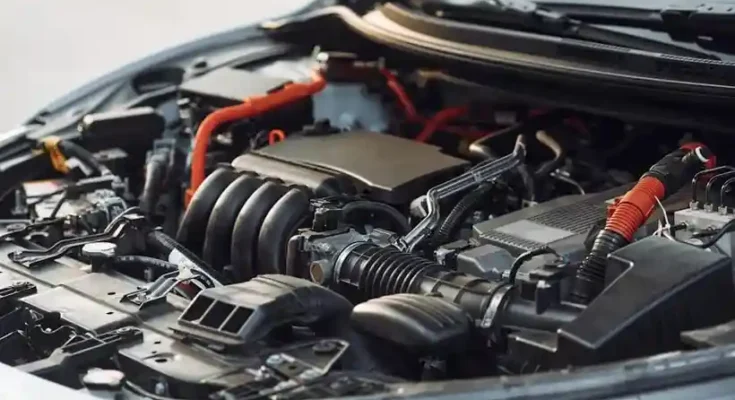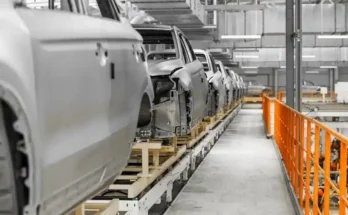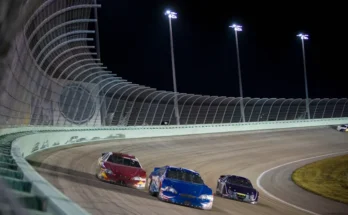The Fascinating World of Automobiles:
Automobiles have come a long way from their humble beginnings as steam-powered contraptions. Today they are sleek, intelligent machines that can drive themselves, talk back, and adapt to our daily lives with uncanny precision. The automobile is more than just a vehicle, it is a cultural symbol, a technological marvel, and a constantly evolving piece of modern art.
For over a century, cars have transformed the way we live, work, and connect. They have created industries, shaped cities, and given birth to entire subcultures. But how did we get here? What lies under the hood of this billion-dollar global obsession?
Let us take a ride through the engine of time and imagination as we explore the past, present, and future of the automobile.
The Birth of a Revolution:
-
From Horse-Drawn to Horsepower
In the late 19th century, the world stood on the edge of mechanical revolution. Steam engines had already transformed trains and ships, and inventors were eager to shrink that power into something more personal. The earliest known self-propelled vehicle dates back to the 1760s, but It wasn’t until Karl Benz introduced the first gasoline-powered car in 1885 that the age of the automobile truly began.
Benz’s three-wheeled Motorwagen may seem like a quaint museum piece today, but it changed the world forever. It sparked an era of innovation and competition that would eventually produce the roaring engines and smooth rides we know now.
-
The Assembly Line Miracle
Henry Ford deserves special mention in the automotive timeline. While he did not invent the car, he revolutionized the way it was made. In 1913, he introduced the moving assembly line, cutting production time from more than 12 hours to just 90 minutes per vehicle. This not only made cars more affordable, it made them a cornerstone of modern life.
The Age of Style and Speed:
-
Cars Become Culture
By the mid-20th century, the car was no longer just a means of transportation. It was a symbol of status, freedom, and identity. The 1950s saw chrome-plated luxury and powerful V8 engines ruling the roads. In the 1960s and 70s, muscle cars and sports coupes captured the imagination of the youth.
Automobiles began to reflect personal style. Whether it was the rebellious roar of a Dodge Challenger or the elegant curve of a Jaguar E-Type, cars told stories about the people who drove them.
-
Technology Meets Aesthetics
As we moved into the 1980s and 90s, design and technology grew more sophisticated. Anti-lock brakes, fuel injection systems, and onboard computers transformed the driving experience. Cars were becoming safer, faster, and smarter.
This era also witnessed the birth of the modern SUV, the rise of compact sedans, and the global expansion of automakers into new markets.
Entering the Electric Era:
-
The Green Awakening
Concerns over pollution and climate change sparked a movement toward cleaner energy in the 2000s. Hybrid vehicles like the Toyota Prius gained popularity, offering reduced emissions without sacrificing convenience. Then came the electric revolution.
Electric vehicles, or EVs, went from niche experiments to mainstream marvels, as communities like r/electricvehicles actively share insights, reviews, and the latest updates.
. Companies began investing heavily in battery technology, charging infrastructure, and software integration. The quiet, torque-filled acceleration of an EV quickly became the new standard of cool.
-
The Self-Driving Dream
Autonomous vehicles are no longer a sci-fi fantasy. With the help of advanced sensors, artificial intelligence, and machine learning, self-driving technology is being tested and deployed in real-world scenarios. Though still evolving, the concept of cars that can navigate traffic without human input promises to reshape how we think about mobility.
The Top 5 Automobile Industries in the World:
Now that we understand how the automobile has evolved, it’s time to meet the giants who keep its heart beating. These five industry leaders are not just carmakers, they are visionaries steering the future of mobility.
-
Toyota Motor Corporation
Founded in Japan in 1937, Toyota has become the world’s largest automaker by volume. Known for its reliability, affordability, and innovation, Toyota revolutionized the industry with its Toyota Production System, a model of lean manufacturing that is still studied worldwide.
Toyota’s strength lies in its ability to balance quality with mass production. It was a pioneer in hybrid technology with the Prius and continues to lead in sustainability. The company is now investing heavily in hydrogen fuel cells and solid-state batteries for next-generation EVs.
Notable Specifications:
-
- Prius: Hybrid synergy drive
- Mirai: Hydrogen fuel cell
- bZ4X: Fully electric SUV with cutting-edge safety features
-
Volkswagen Group
Headquartered in Germany, Volkswagen is more than just the maker of the Beetle. It owns Audi, Porsche, Lamborghini, and several other premium brands, creating an empire that spans both affordability and luxury.
Volkswagen excels at engineering precision and brand diversification. The company is also a major force in the electric future with its ID series of EVs and ambitious goal to become carbon-neutral by 2050.
Notable Specifications:
-
- ID.4: Electric SUV with 250+ miles range
- Audi e-tron: Luxury electric crossover
- Golf GTI: Iconic performance hatchback
-
General Motors (GM)
One of America’s oldest and most iconic car companies, GM operates brands like Chevrolet, GMC, Cadillac, and Buick. Founded in 1908, GM has played a central role in both the rise of the American automobile and the global market.
GM combines tradition with technology. The company is aggressively transitioning to an all-electric future with its Ultium battery platform. It also invests in autonomous technology through Cruise, its self-driving division.
Notable Specifications:
-
- Chevy Silverado EV: Electric truck with up to 450 miles range
- Cadillac LYRIQ: Luxury electric SUV
- Cruise Origin: Autonomous vehicle concept
-
Tesla Inc
Though relatively young compared to its peers, Tesla has redefined what people expect from electric vehicles. Founded in 2003, Tesla’s mission is to accelerate the world’s transition to sustainable energy.
Tesla’s innovation is relentless. From over-the-air software updates to autopilot capabilities, Tesla cars feel more like tech products than traditional vehicles. Its charging infrastructure, battery tech, and minimalist design have set new industry standards.
Notable Specifications:
-
- Model S Plaid: 0 to 60 in under 2 seconds
- Cybertruck: Futuristic design with bulletproof body
- Full Self-Driving (FSD): Advanced driver assistance system
-
Hyundai Motor Company
This South Korean manufacturer has grown into a global powerhouse with its combination of affordability, reliability, and modern design. Alongside Kia, Hyundai is gaining recognition for its advanced electric offerings and futuristic concepts.
Hyundai stands out with bold design choices and investment in hydrogen and electric technology. Its EV platform, E-GMP, enables fast charging and long ranges. The brand also experiments with robotics and air mobility.
Notable Specifications:
- IONIQ 5: 800V fast-charging electric crossover
- NEXO: Hydrogen fuel cell SUV
- Prophecy Concept: Glimpse into the future of automotive design
Driving into Tomorrow:
The automobile is no longer confined to asphalt and steel. It is becoming a software-driven experience, a mobile device on wheels, and a platform for innovation. From flying cars to AI-powered assistants that understand your mood, the future promises to blur the lines between fantasy and reality.
Sustainability, connectivity, and autonomy will define the next era. The question is not just how cars will evolve, but how we will evolve with them.
Conclusion:
From steam engines to electric dreams, the journey of the automobile mirrors our own pursuit of progress. It is a story of invention, competition, art, and human desire to move faster and smarter.
As we stand on the cusp of yet another transformation, one thing is clear. The road ahead is wide open, and the ride has only just begun. Whether you love the smell of gasoline or the silent rush of electrons, one truth remains: the automobile is here to stay and ready to take us places we never imagined.




